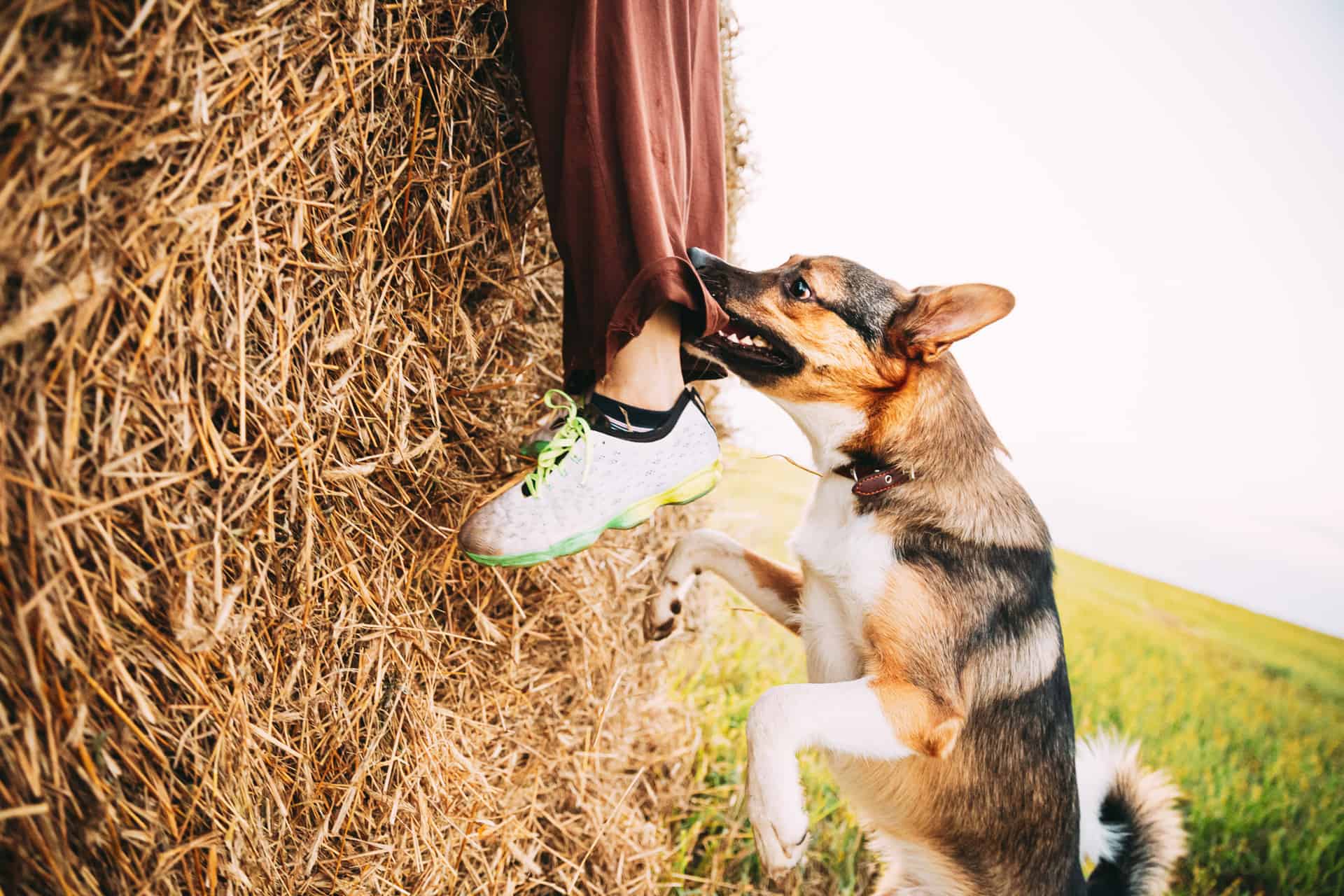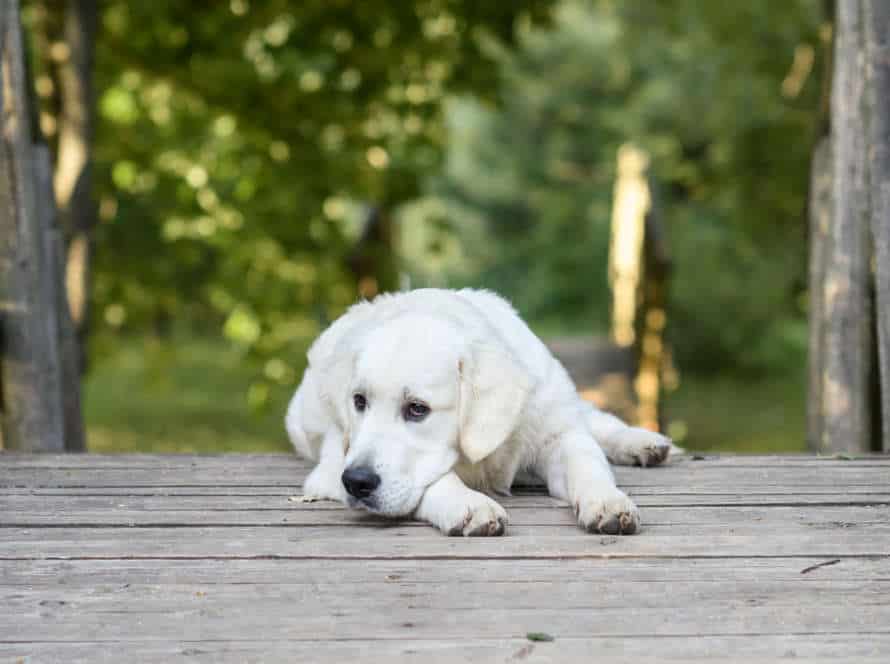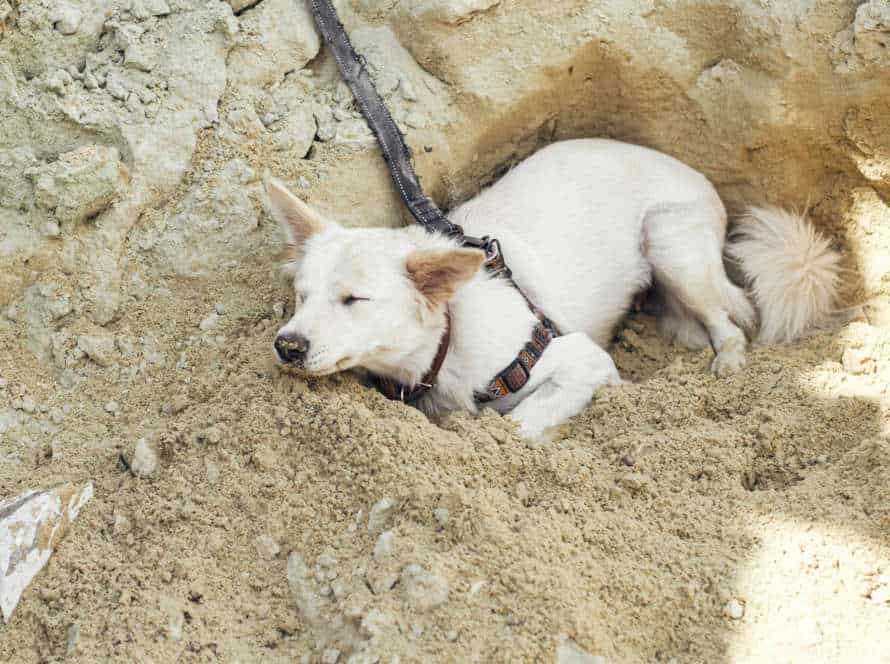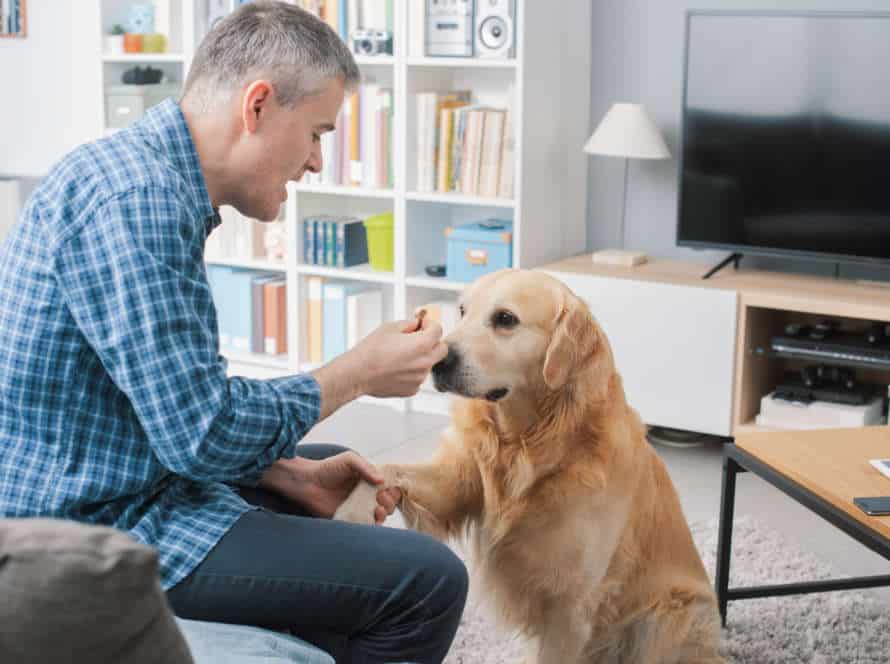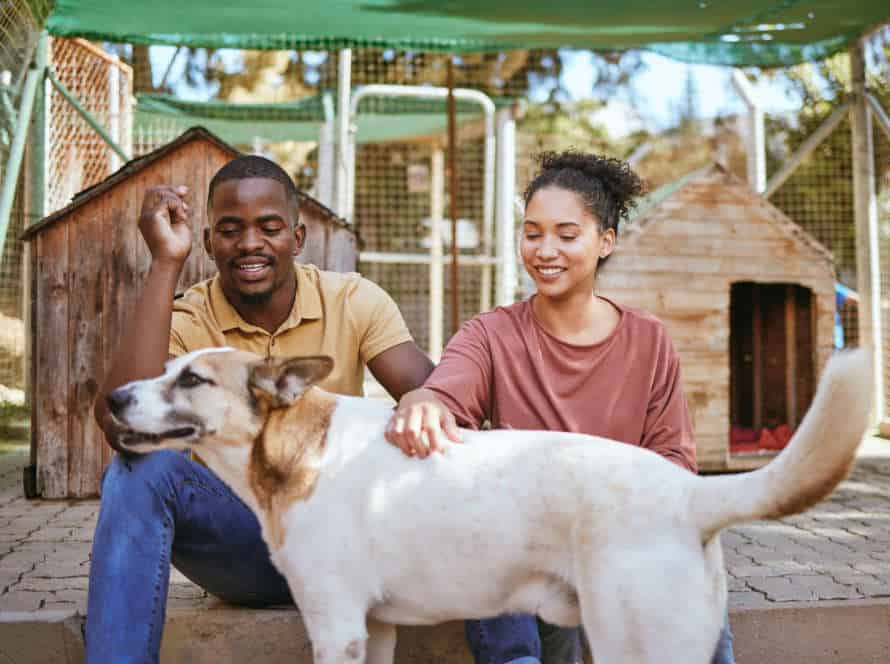Aggression in Dogs: Unraveling the Mystery
Aggression in dogs is complex and has many facets. It could come from various places. Common causes are fear, guarding resources, owning territory, pain/illness, and not enough socialization/training.
Signs of aggression are growling, barking, biting, snapping, and lunging. It is important to deal with aggression quickly to prevent harm. Consult a vet or animal behaviorist to find the main cause and to create a plan. Training and socializing can help to stop aggression.
What is Aggression in Dogs?
Aggression in dogs is complex. It can come in many forms, with medical issues, genetics, or environmental influences being possible causes. To make sure our pooches live happily ever after, we must comprehend the various kinds of aggression and how to manage them. Let’s explore the enigma of canine aggression!
Types of Aggression in Dogs
Aggression in dogs is an umbrella term that covers various types of hostile, fearful, or anxious behavior towards people, animals, or objects. Knowing these types of aggression is important for pet owners to manage and hinder aggressive behavior in their dogs.
Here are the most usual kinds of aggression in dogs:
- Fear-Related Aggression: When a dog feels threatened, they may act out of protection or survival instinct.
- Territorial Aggression: Dogs may become aggressive to protect their environment, things, or family members.
- Resource Guarding Aggression: Dogs may display dominant behavior when they think something is valuable, like food, toys, or objects.
- Predatory Aggression: This is a natural instinct in dogs and shows as chasing and hunting behavior towards small animals or objects like prey.
- Inter-Dog Aggression: This behavior happens between two or more dogs for various reasons.
Pro Tip: Consult a professional dog trainer or behaviorist to diagnose and treat aggressive behavior in dogs properly.
Causes of Aggression in Dogs
Aggression in dogs can be fatal. Knowing the root causes can help avoid dangerous scenarios. There are a few reasons why a dog might act aggressively. From medical issues to environmental and social ones.
- Fear or anxiety: Dogs become aggressive when they feel threatened or scared.
- Pain or sickness: Dogs may act out if they’re hurting or have an illness.
- Territorial: Dogs can be aggressive to protect their space, family, or possessions.
- Lack of socialization: If a dog isn’t taught manners around humans or animals, it can be aggressive.
- Genetics: Some breeds are predisposed to aggression.
Spotting triggers and getting help from a vet or trainer can help manage and prevent aggression in dogs.
Warning Signs of Aggression in Dogs
Aggression in dogs is a serious issue that needs to be dealt with quickly. To prevent harm to other canines and humans, it’s helpful to recognize the warning signs early on. Here are some to look out for:
- Stiff posture – if your pooch is standing without moving, and you sense tension, it could be a sign.
- Growling or snarling – dogs often express emotions this way.
- No eye contact – aggressive dogs tend to avoid looking at you.
- Lunging – they may try to lunge at other people or dogs.
- Unprovoked biting – if you feel your pup might bite, it’s a warning.
- Raised hair – along the back or shoulders is a sign of aggression.
It’s essential to intervene early when dealing with canine aggression. Seek professional help from a trainer or veterinary behaviorist.
Treating Aggression in Dogs
Aggression in dogs? Yikes! It can be tricky to tackle. It tests pet owners’ resolve. To address it, first understand why it’s happening. Then, implement strategies to deal with it and help the dog learn better behaviors. Boom!
Understanding the Root of the Aggression
Aggression in dogs can be complex. To stop and prevent it from becoming dangerous, it is important to know the root cause.
Common causes of aggression include:
- Fear: Loud noises, new environments, people, or animals may make a dog feel scared and display aggression.
- Lack of socialization: If a dog hasn’t been socialized, they may be fearful or aggressive towards new people or animals.
- Pain or illness: Dogs in pain or who are ill may react aggressively to being touched or approached.
- Trauma or past experiences: Dogs that have been abused or have had traumatic experiences may show aggression.
To treat your dog’s aggression, it is best to work with a professional dog trainer or behaviorist. They can discover the cause and create a plan tailored to your dog’s needs.
Positive Reinforcement Training
Positive reinforcement training is a great way to treat aggression in dogs. This involves rewarding them for good behavior, such as staying calm. Rewards can be treats, verbal praise, or physical affection. Here are some tips to apply this technique:
- Identify triggers that make your dog aggressive, such as being around other dogs or people.
- Introduce your dog to the trigger in a controlled environment, like a training class. Reward them for not showing aggression.
- Gradually increase the level of exposure to the trigger and continue to reward good behavior.
- Don’t punish your pet for aggressive behavior, as this can make it worse.
Pro Tip: Consult a professional dog trainer or behaviorist to design a personalized training plan.
Medication to Treat Aggressive Behavior
Medication can be useful for treating aggressive behavior in dogs, but only when other techniques have failed. Here are some commonly prescribed meds:
- Fluoxetine, or Prozac, is an antidepressant which can reduce anxiety and aggression.
- Clomipramine can also help, treating anxiety and obsessive-compulsive disorders.
- Diazepam, or Valium, is a sedative that can calm aggressive dogs. But, be careful; it may lead to addiction and side effects.
- Gabapentin, an anticonvulsant, can decrease anxiety and aggression. It may make your pup drowsy or dizzy.
Pro tip! Ask your vet before giving any medication. Each dog is unique, and some meds may have bad effects. Additionally, meds should be combined with behavior modification to be effective in the long run.
Preventing Aggression in Dogs
Aggression in dogs is a tricky thing. It can become very dangerous if not handled properly. Thankfully, there’s help. We will explore the best methods to stop aggression in dogs and lessen its intensity if it does happen.
Proper Socialization Techniques
Socialization is vital for dogs. It stops aggression and promotes good relationships with humans and other animals. Here are some tips on socializing:
- Start young: Puppies should be socialized between 3 and 16 weeks of age. At this age, they’re more open to new experiences and less likely to act scared or angry.
- Introduce your pup to new humans, places, and animals: Introduce them to different environments, sights, and sounds. Also, expose them to diverse people and other pets.
- Use positive reinforcement: When your pup acts friendly and not aggressive, reward them with treats, toys, and compliments.
- Monitor their reactions: Watch their body language, vocalizations, and physical cues when in social situations. If they show aggression or fear, take them away from the situation immediately.
- Seek help: If your pup displays persistent aggression or fear towards people, animals, or objects, ask a vet or a professional dog trainer for help.
Early Puppy Training and Obedience Classes
Early puppy training and obedience classes are a must to avoid aggression in dogs. Puppyhood is an essential phase for learning and socializing, as this is when dogs form their temperament and behaviour. The right training and socialization can prevent aggression in dogs.
Here are some tips for early puppy training and obedience classes:
- Start training between 8-16 weeks old.
- Reward desired behaviour with praise, treats or toys.
- Socialize your puppy with people of all ages and other dogs in a safe environment.
- Teach basic commands like sit, stay, come and down.
- Attend obedience classes with a professional dog trainer to learn proper methods and strengthen the bond with your pup.
Pro tip: Consistency is the key! Be consistent and patient in your training to get the best results.
Responsible Ownership Techniques
Owning a dog responsibly can prevent aggression and make the pet and owners have an enjoyable time. Here are some techniques to do this:
- Early socialization. Introduce your pup to different people, animals, and places. This stops fear and anxiety, which can cause aggression.
- Positive reinforcement training. Reward good behavior and ignore or change bad behavior. This teaches your pet how to interact properly.
- Regular exercise and mental stimulation. Make sure your pup gets enough exercise and mental stimulation. This prevents boredom and frustration, which can cause aggression.
- Consistent rules and boundaries. Establish rules and boundaries. This helps your pup understand what is okay and stops confusion and anxiety.
- Professional help. If there are signs of aggression, consult with a professional. They can help you out.
Living with an Aggressive Dog
Living with an aggressive pup? It can be tough! They may bark, growl, snap, or even bite. It’s essential to understand why they act this way and how to handle it. This article looks at the causes and solutions of dog aggression.
Managing an Aggressive Dog
Aggressive dogs need patience, consistency, and an understanding of why they are aggressive. Here are tips to manage them:
- Get help from a pro dog trainer or behaviourist to understand your pup’s attitude and create a plan.
- Find out what triggers your dog’s aggression and try to limit or avoid it.
- Have a regular routine for feeding, exercising and playing with them.
- Teach basic commands like “sit,” “stay,” and “come,” and reward good behaviour.
- Use positive reinforcement techniques, like treats and words of encouragement, to reward good behaviour and discourage bad.
Remember, managing an aggressive dog means being dedicated to training and understanding them. Pro tip: Put your safety first and get professional help when needed.
Ensuring Safety for Yourself and Others
Living with an aggressive dog can be risky, but there are steps you can take to keep safe. Here are some tips:
- Understand the type of aggression your dog is exhibiting – territorial, fear-based, protective, or predatory.
- Seek help from a professional trainer or behaviorist for a customized plan for your dog.
- Prevent it – use a leash, muzzle, and secure your home.
- Be a responsible pet owner – get regular vet care, vaccinations, and spay/neuter.
- Supervise interactions between your dog and others, especially children and strangers.
- Stay vigilant and take action for a safe living environment for everyone.
Knowing When to Seek Professional Help
Having an aggressive pup can be tough and worrying. Knowing when to get expert help is super important to make sure everyone in the home is safe, even the dog.
Look out for these signs that your pup needs help from a pro:
- Aggression comes out of nowhere.
- Aggression is towards people or other animals.
- Aggression happens a lot or in various moments.
- Aggression is bad, leading to trouble or destruction.
If you notice any of these or feel scared around your pup, it’s better to get professional help. An experienced dog coach or behaviorist can assess your pup’s behavior and make a plan to tackle the aggression. Don’t ignore the issue, getting help is the first step for a better and smoother home for all, including your cute friend.
Frequently Asked Questions
Q: Why do some dogs exhibit aggressive behavior?
A: There is no single answer to this question as many factors can contribute to a dog’s aggressive behavior. Some dogs may have inherited a predisposition to aggression, while others may have learned aggressive behaviors through negative experiences or lack of socialization.
Q: Can aggression in dogs be treated?
A: Yes, aggression in dogs can be treated, but it requires an individualized approach depending on the dog’s specific situation and underlying causes of the aggression. Treatment options may include behavior modification, medication, or a combination of both.
Q: Is aggression in dogs a breed-specific issue?
A: No, aggression in dogs is not a breed-specific issue. While certain breeds may have a higher likelihood of exhibiting aggressive behavior due to genetics or history of breeding for such traits, any dog can exhibit aggressive behavior regardless of breed.
Q: Are there warning signs of aggressive behavior in dogs?
A: Yes, there can be warning signs of aggressive behavior in dogs such as growling, snarling, showing teeth, lunging, or biting. It’s important to pay attention to these warning signs and seek professional help if necessary.
Q: Can aggressive behavior in dogs be prevented?
A: While it’s impossible to completely prevent all aggressive behavior in dogs, there are several measures that can be taken to minimize the likelihood of aggressive behavior such as proper socialization, positive reinforcement training, and providing a safe and stable environment.
Q: Is it ever too late to treat aggression in dogs?
A: No, it’s never too late to seek treatment for aggression in dogs. Even if a dog has been exhibiting aggressive behavior for an extended period of time, there are still treatment options available that can help improve their behavior and quality of life.

